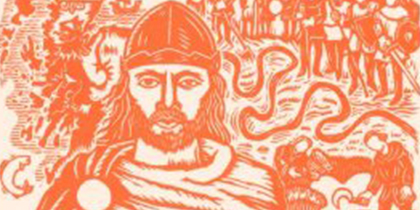
February 11, 2013, by Christina Lee
What books reveal about us
If, for some unimaginable reason, all that remained of the culture of 2012 in 2512 was a battered and annotated copy of Fifty Shades of Grey, a printed programme of the Olympic Games, and video footage of Have I Got News for You?, what conclusions about us would our descendants reach, and how would they reach them? Such questions, if about very different texts and often more evidence, confront researching medievalists on a daily basis, and rather than retreat to aesthetic considerations, most of us engage with them. In my discipline, we know this as book history, a consideration of the book as object, with a history of its own, and my understanding of any one text is inflected by the way it has been transmitted. This all seems fairly arid, so here’s an example. The first witness to Harry’s Wallace is a manuscript compiled within thirty years of its composition; that manuscript also contains a text of Barbour’s Bruce, a poem of the 1370s. The links between the poems – both describe the exploits of Scots heroes of the First War of Independence, both adopt a mixed genre of romance and chronicle – were clearly recognised at an early point in their transmission, and somehow seen to belong together. A century later, Wallace appears in a flurry of print editions (it had also been one of the first poems printed in Scotland in the first decade of the sixteenth century); in his preface, the printer is at pains to suggest that interest in the Wallace had nothing to do with the Union of the Crowns, and another crisis in Scottish, indeed British identity. Such disclaimers might lead us modern readers to precisely the opposite conclusion. Move forward to the eighteenth century (just after the Union of the Parliaments), and another version of the Wallace is published, this time with troubling pre-Reformation references removed, such as Wallace’s vision of the Virgin Mary. This eighteenth-century version, incidentally, is what lies behind Braveheart, and there are all sorts of conclusions we could draw from that.
In each of these cases, we might make some judgements about cultural assumptions and political attitudes, supported by our knowledge of manuscript circulation, economic cost and even literacy rates. How does 2012 look now?
No comments yet, fill out a comment to be the first

Leave a Reply